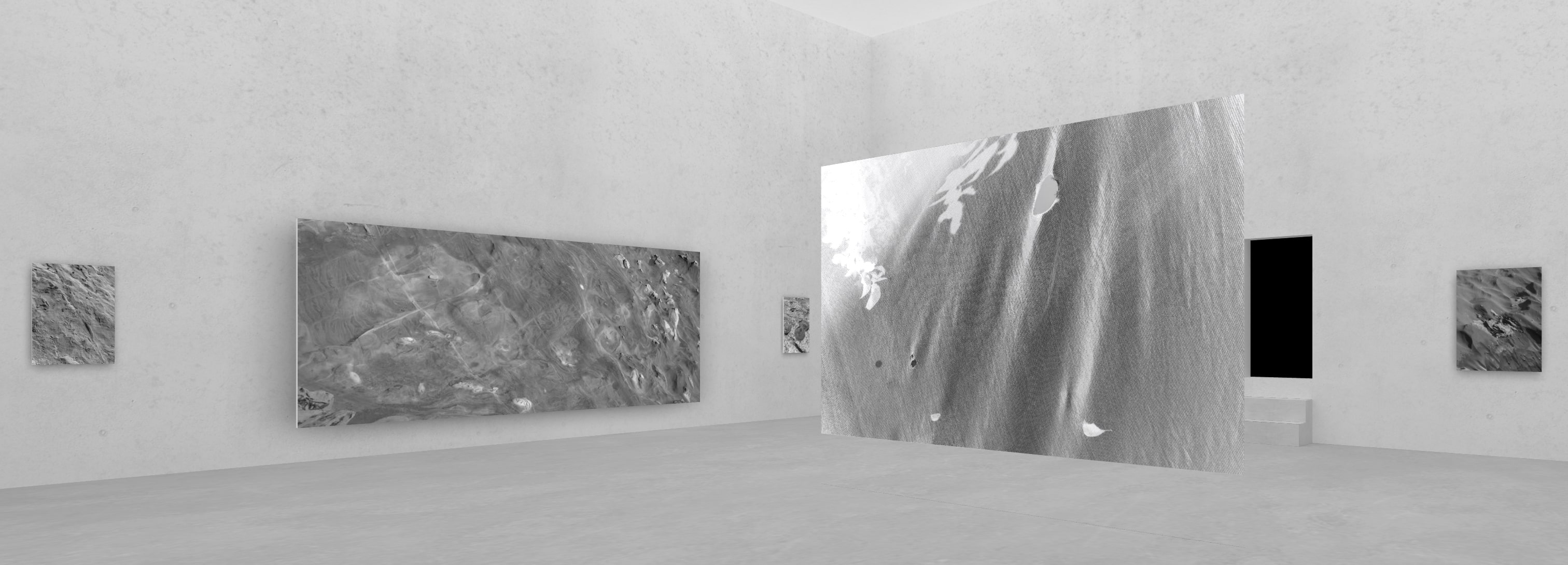
17 June 2022 - 17 August 2022
We are thrilled to present our second exhibition—IN ZENITH—composed of works by Misha Davydov.
Misha Davydov (b. 1998, Moscow, Russia) works in photography and installation to investigate the tensions between object and representation, the material aspects of the photographic medium, as well as the constructed nature of reality. Davydov's works have been exhibited in a number of venues in Portland, Oregon, including Blue Sky Gallery, Well Well Projects, and Converge45. This summer, they have solo shows at Space Place Gallery in Nizhny Tagil, Russia; and at after / time collective gallery in Portland, Oregon. Their photographs have also been featured in publications by Booooooom and fifth wheel press. They hold a Bachelor of Arts in Studio Art from Lewis & Clark College and will be attending UC Irvine starting Fall 2022, where they are pursuing a Master of Fine Arts.


“ These photographs are the evidence of the summer's hottest days. When the sun is at its zenith, directly overhead, any trace of the observer's presence disappears from view. In these moments, the world around might appear still and silent, but it continues being described by the shadows it casts. ”
Misha Davydov
mishadavydov.com
mishadavydov.com
In Zenith opens virtually at Grey State Gallery on June 17th, 2022. For the second exhibition at the online gallery, Portland-based artist Misha Davydov (they/them) presents a compelling suite of images from a larger body of work. The show's unique hosting territory via an online platform allows for a multi-sensory experience. As gallery “visitors” make their way around the rendered space, they experience autonomy in choosing how to navigate the gallery and experience each piece. The work on view is almost purely photographic – while thematically the images displayed here are outliers in terms of the artist’s conceptual and sculptural background, the root explorations of time, belonging, and identity span across their multiple disciplines.
Text by Luiza Lukova
Simplified, the word “zenith” can be described as the point in the sky or celestial sphere directly above an observer. However, here, it is recontextualized as an all-encompassing state of being. The addition of the preposition “In” to the title of the exhibition has the power of locating both artist and viewer in positions of grandeur and voyeurism. This body of work, in its multitude of dimensions, emphasizes the act of observation within the constructed reality of Grey State. Clicking backwards and forwards, left and right, the audience is, for a moment, suspended in another world and dissociated from their own self. Just as we the viewers experience this phenomenon within the synthetic space, so too does the body of the photographer – their viewpoint within the photographs comes to be obsolete. As a result of their framing, the subjects in the photographs are given the breadth of space to be on their own.

The shots on display are evidence of the hottest days of summer, when the sun is at its peak. There prevails a universality here wherein, at certain points of existence and location, a collective “we” is subject to the exact same conditions of the sun – directly overhead and scorching. Yet, despite the omniscient viewpoint of the image maker, any trace of their presence, even their shadow, disappears from view. Rendering each image in black and white has the observed effect of neutralizing some of the intensity of the high sun setting. This further serves to emphasize the deep shadows caught and stretched in the work. In these captured moments, the world appears silent and frozen in time but remains described by the shadows cast within the frames.
The natural landscapes displayed for In Zenith are of a straightforward composition. Barren scatterings of rocks, a chain strewn over a rubbled landscape, a towel resting over a dried branch make up a large portion of the topography. Davydov is able to tap into the dynamism of these occasions through a hyperfixation on perhaps otherwise overlooked details. The artist brings to the foreground and to our attention the minutiae of this exhibition – the manner in which time and climate have notched a lone piece of driftwood; mysterious trails and forms scratched through the sandy, arid earth; the ridges in a paddle shaped petal of what appears to be a banana leaf; a lone tree, half in view, atop a hilly viewpoint. Considering again how these images were made, not a single trace of human presence can be noted in these works. The observer has extricated themselves from the realized process to allow for this environment to flourish on its own.
There is only one literal body in all of the photographs chosen for the exhibition, that of an individual's back sitting amidst high grasses. In this photo, the viewer is looking at the center frame which happens to be the top of the subject’s head, as if the audience here too is the sun at its zenith. Davydov’s interest in photography resides in the multiplicity of its nature; it can create a record, reveal something an eye cannot see, or even construct reality. The complexities of their chosen medium acts as a bridge for them to process their own experience in the world, sorting through layers of identity and collisions of cultures. Raised in Russia, and having lived in the Netherlands and the United States, Davydov’s creative process is a segway into channeling their formative experiences within a cultural context so radically different than the one they were born into. Thus, the irreversibility of time, unreliability of memory, and any attempts to mitigate their differing, often contradictory, identities all serve as driving factors for their making.

In the center of the Grey State gallery is a composite 3D object constructed of two images by the artist. The work stands as the only sculptural piece displayed within the gallery and adds a compelling element to the exhibition as a result of our being able to circumnavigate it in its entirety. The intrigue deepens when the audience observes that the images are identical, only one is reproduced in its negative inverse. Where the shadows of the foliage on one side loom dark and heavy on the mesh screen, its reversal on the other side of the object depicts the image flipped and in the positive, the cast leaves now appearing a bright white. Little else is given to help the audience identify and place this work in a known context. This serves to reinforce the notion that ambiguity is the main value of representation for In Zenith. For the artist, prioritizing the disparate parts and the incongruities at play within these images allows for a more authentic experience with their work.
Within their primary practice, Davydov seeks to deconstruct the hierarchies between the seemingly dominant and subservient terms, such as a negative and a positive, an original and a replica. Their dominant images are those that are hard to place and raise questions about the world outside of the frame fragmenting it. This process is then performed and multiplied, ultimately redefining the relationship between a practice and its outcome. In such close examination of the attributes of the photographic medium, the disparity and coalescence between an object and its representation, as well as the potential of the latter to be objectified, are at the forefront of any viewer’s experience. For In Zenith, these commonalities converge to present Davydov’s hybrid forms as crafting new terrains (both digitally and spatially) that are malleable and constantly emerging. In line with the introspective nature of the artist’s process, this exhibition invites viewers to actively challenge their own predetermined expectations and reinterpret the enigmatic environments presented to them.

